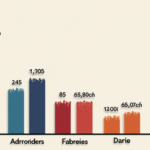Introduction to the Topic
The Banco Interamericano de Desarrollo (BID) has identified the slower growth of the U.S. labor market and reduced migration flow, particularly from Mexico since 2023, as factors contributing to the deceleration in remittance sendings. Additionally, the economic recovery of countries like Central America, Mexico, and the Caribbean has also played a role in this slower growth.
Understanding Remittances
Remittances are financial transfers made by migrants to their families or relatives in their countries of origin.
Factors Affecting Remittance Growth
According to an analysis led by René Maldonado, an expert on remittances, there were signs of recovery in 2024 with positive migration rates for Mexicans to the U.S. However, it takes time for migrants to settle and find employment, which enables them to send money home.
As migrants establish themselves and secure jobs, they begin sending money to their families. Over time, both the amounts sent and the percentage of their income dedicated to remittances decrease due to increased earnings and diminishing connections with their home countries.
Distribution of Remittances
Who Receives the Remittances?
The BID analysis examines how remittance usage varies depending on the recipient:
- If the recipient is a child, migrant senders allocate 28-30% of their income for transfers.
- If the recipient is a spouse, migrants allocate around 15% of their income for transfers. Most resources received at their origin home are allocated to education, maintenance, medical expenses, and mortgage payments.
- If the recipients are parents or grandparents, migrants send 10% of their income to cover debts, property payments, and save a portion.
In this case, resources are primarily directed towards education, maintenance, and medical expenses.
Despite the majority of remittances being spent on maintenance rather than investments, they significantly elevate the living standards of recipient families. They prevent households from falling into poverty and support local economies.






